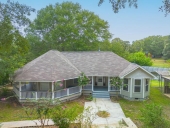
 2
2





 7
7




For all your Montana Masonry Heater parts (also known as) Rocket Mass heater parts.
Visit me at
dragontechrmh.com Once you go brick you will never go back!
 4
4




 3
3








 3
3




For all your Montana Masonry Heater parts (also known as) Rocket Mass heater parts.
Visit me at
dragontechrmh.com Once you go brick you will never go back!
 1
1




 1
1




thomas rubino wrote:Hi Boris;
So 12' of horizontal pipe is not much.
A standard 6" J tube rocket can push 30' an 8" J tube pushes 50'
As you will see when you get the builders guide. Each 90-degree turn is a 5' deduction, so making a 180-degree turn will use up 10' of your 12' allowed.
So to use a mass you will want a 12' straight pipe run not a 6' doubled back.
Now let's talk about your mass.
Forget about building the entire thing with cob. Cob benches are beautiful but certainly not acceptable to your average adult.
A question, do you object to red brick in your living room?
Your entire mass can be contained by a red brick wall/box.
Now let's talk about how you fill that box. On the very floor, you will want insulation. We want that heat to spread sideways and up not down trying to heat the earth. Even if your slab is insulated you would want a layer of sand or perlite to keep from trying to heat the slab.
The washed gravel fill does work. However, it is not that efficient at holding heat.
Too many small voids that let heat escape, which might seem OK as it is going into your home, but the small stones do not hold heat very well or very long.
You want large stones, as big as you can easily move. Then you need a material to fill any voids between the stones.
Small amounts of cob (clay/sand mix) works well but simple dirt can be used if you like. A plastic liner could be put down to aid cleanup if you chose to remove the mass later.
A build too cool to miss:Mike's GreenhouseA great example:Joseph's Garden
All the soil info you'll ever need:
Redhawk's excellent soil-building series






|
There's just something sexy about this tiny ad
The new gardening playing cards kickstarter is now live!
https://www.kickstarter.com/projects/paulwheaton/garden-cards
|






